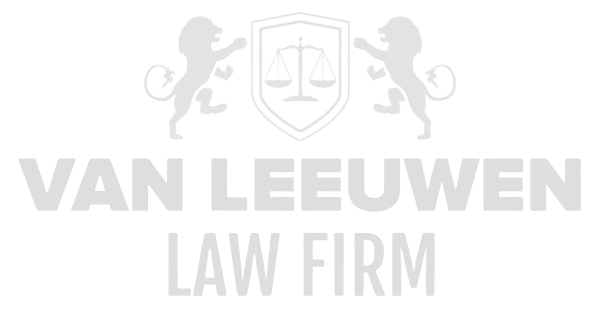Strategy and Program Design is a crucial component of the Strategy, Risk & Compliance (SRC) service and plays a vital role in establishing a robust infrastructure to prevent and combat fraud within organizations. In the context of fraud risk management, Strategy and Program Design refers to the targeted formulation, structuring, and operationalization of strategic frameworks and programmatic initiatives that contribute to the proactive identification, control, and mitigation of fraudulent risks. This process requires not only a deep understanding of the internal and external risk factors an organization faces but also a thoughtful approach to implementing policies, control systems, reporting structures, and training programs. A well-designed strategy serves as the blueprint for a resilient organization capable of not only detecting but, above all, preventing fraud. The extent to which an organization is prepared for fraud is heavily dependent on the effectiveness of its program design. In an environment where organizations, their executives, and supervisory boards are confronted with serious allegations such as financial mismanagement, fraud, bribery, money laundering, corruption, and violations of international sanctions, a preventive and strategic program design is essential to avoid or manage reputational damage, operational disruption, and legal liability.
Financial Mismanagement
The Strategy and Program Design for risks arising from financial mismanagement should focus on strengthening internal governance, improving transparency in decision-making, and establishing clear reporting lines. Financial mismanagement refers to the improper or negligent handling of financial resources, which can lead to inefficiency, waste, unauthorized expenditures, or a lack of accountability. A strategic program to address these risks begins with a thorough analysis of financial processes, budgeting cycles, and the reliability of financial reporting. Within this framework, policies must be developed that require all financial transactions to fall within predefined boundaries and be supported by verifiable documentation. Control mechanisms such as periodic audits, segregation of duties, and authorization rules should be integrated at all levels of the organization. Furthermore, it is important to foster a culture of financial integrity where deviations are detected and addressed in a timely manner. When organizations are accused of financial mismanagement, the reputational damage is often significant, resulting in a loss of trust from investors, regulators, and stakeholders. A preventive program design enables an organization to identify these risks in time and manage them effectively.
Fraud
Fraud risks require a particularly detailed Strategy and Program Design that includes both preventive and detective measures. Fraud is typically committed for personal gain and often involves deliberate manipulation of data, processes, or systems. An effective strategy to combat fraud begins with defining an organization-wide risk appetite and developing fraud protocols that explain how fraud risks are identified, assessed, and managed. Programs should aim to embed anti-fraud principles into all business processes, utilizing risk indicators, data analytics, reporting systems, and behavioral analysis. Furthermore, a clear governance structure must be established in which responsibilities related to fraud prevention and investigation are explicitly assigned. The development of scenario-based simulations, fraud guidelines, and codes of conduct is indispensable to raise employee awareness of their role in fraud prevention. Since allegations of fraud can immediately undermine confidence in an organization and often lead to legal proceedings and sanctions, designing an adaptive and effective fraud management program is essential for long-term resilience against fraudulent acts.
Bribery
The risk of bribery requires a program design focused on preventing undue influence within decision-making processes. Bribery involves offering or receiving advantages with the aim of unduly influencing decisions. These risks commonly arise in situations involving external interests, such as procurement, international trade, or collaboration with intermediaries. A robust Strategy and Program Design must therefore be based on explicitly prohibiting any form of undue influence and incorporating anti-bribery clauses in contracts with third parties. Policies should address rules on gifts and hospitality, conflicts of interest, third-party due diligence, and mandatory reporting of suspicious transactions. Internal controls should include regular reviews of decision-making processes, monitoring of contract awards, and analysis of unusual patterns in business relationships. Mandatory training and awareness campaigns are also necessary to help employees recognize bribery risks and act appropriately in doubtful situations. If an organization becomes involved in bribery scandals, it may face heavy fines, exclusion from government contracts, and long-term reputational damage. A preventive and systematic program design is therefore essential to safeguard integrity and maintain public and commercial trust.
Money Laundering
Money laundering poses a particular risk to organizations that facilitate financial transactions or engage in cross-border business. The Strategy and Program Design regarding anti-money laundering measures (AML) must comply with both national and international regulations and is preferably based on a risk-based approach. The AML program should begin with a solid risk assessment of customer segments, products, and geographies, followed by the development of concrete policies for customer due diligence (CDD/KYC), transaction monitoring, and reporting of suspicious activities. The use of advanced technologies, such as automated transaction detection systems and machine learning algorithms, can assist in the early identification of unusual financial flows. The program design should also include escalation procedures, independent audits, and targeted training. Through periodic evaluations and policy updates, the effectiveness of the program is maintained. Organizations involved in money laundering—whether knowingly or not—risk financial penalties, criminal prosecution, loss of licenses, and exclusion from international markets. A strategically designed anti-money laundering program serves as the first line of defense against such integrity violations.
Corruption
Corruption within organizations undermines fundamental standards of fairness and reliability and disrupts equal access to resources and opportunities. Strategy and Program Design aimed at combating corruption requires a comprehensive and interdisciplinary approach. It is necessary to develop a policy framework in which corruption is defined, prohibited, and sanctioned, with explicit guidelines for gifts, conflicts of interest, lobbying activities, and confidentiality. Programs should be based on risk profiles per function, sector, and country, and must be embedded in recruitment procedures, supplier selection, and investment evaluations. Control structures such as the four-eyes principle and mandatory due diligence for strategic partners are vital to implementation. In addition, it is important that the organization promotes an open reporting culture and provides confidential reporting channels. In cases of corruption, organizations face risks of prolonged legal proceedings, negative publicity, loss of concessions, and even regulatory interventions. A carefully designed anti-corruption program is therefore a prerequisite for sustainable business operations and public legitimacy.
Violations of International Sanctions
International sanctions are imposed in response to geopolitical developments and have direct implications for organizations operating in international markets. Strategy and Program Design concerning sanction compliance must focus on structurally integrating sanction management into all relevant business processes. This begins with a strategic policy outlining how sanction risks are identified, evaluated, and mitigated. Concrete measures include daily screening of customers and suppliers against sanction lists, blocking transactions with sanctioned entities, and conducting legal reviews in international deals. The program should provide for continuous monitoring, reporting obligations, and incident management procedures. Training for staff, including management, is essential to ensure knowledge of sanction rules and exceptions. Ignoring or violating sanctions often leads to far-reaching consequences such as asset freezes, loss of market access, legal liability, and reputational damage. By implementing a comprehensive and strategic sanction compliance program, an organization strengthens its resilience against geopolitical risks and legal sanctions.










